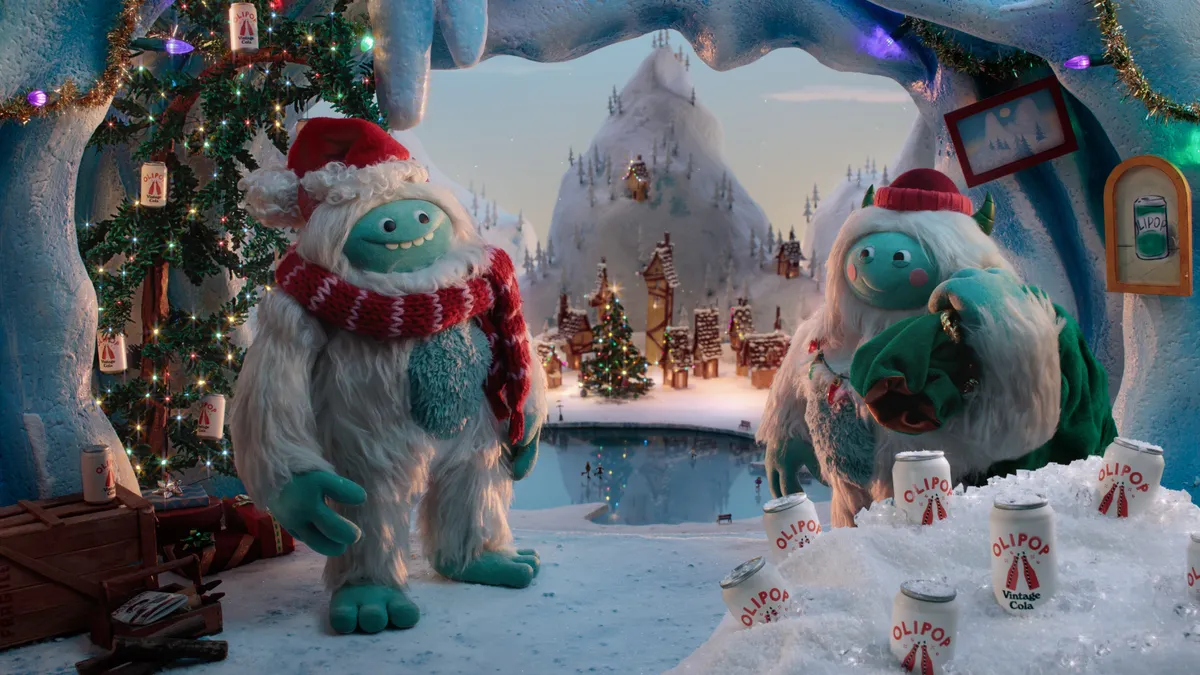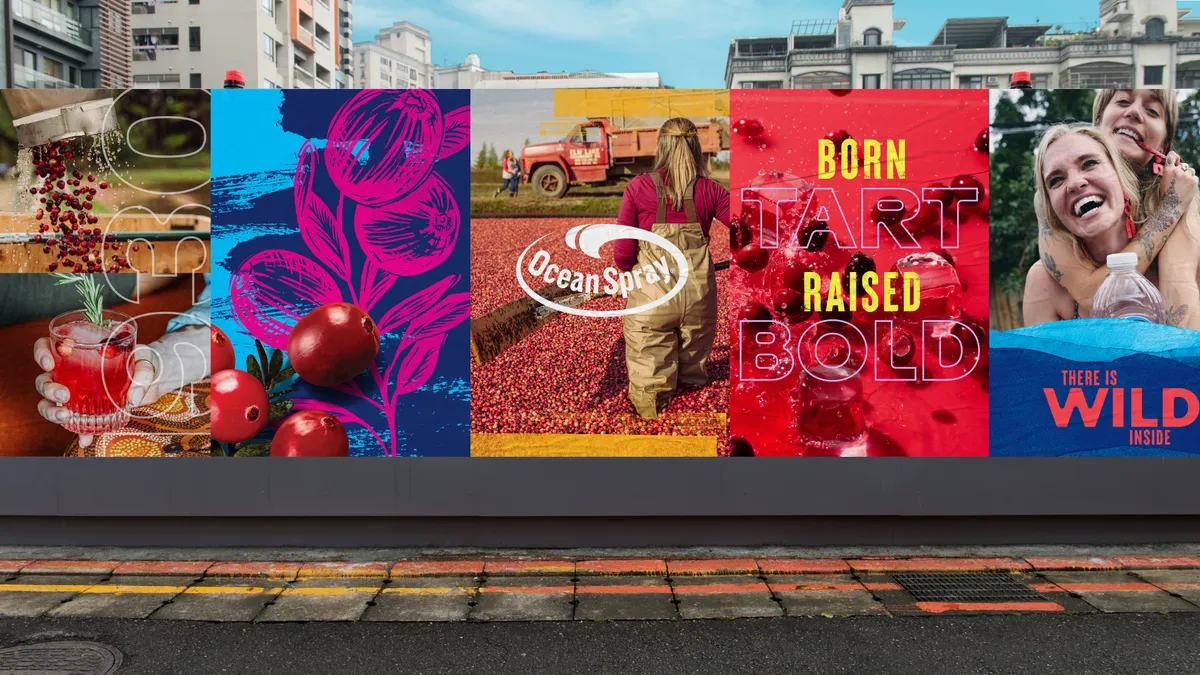Campaign Trail is our analysis of some of the best new creative efforts from the marketing world. View past columns in the archives here.
There’s arguably no holiday tradition more beloved (or more divisive) than the Christmas movie. The genre has been a theatrical staple since the Silent Era, whether featuring Santa, Scrooge or misunderstood characters who just want to get in on the seasonal cheer, like the titular star of “Rudolph the Red-Nosed Reindeer” or Jack Skellington from cult-favorite “The Nightmare Before Christmas.”
This year, Rudolph and Jack have company in the form of Oli and Pop, two yetis that star in a 30-second holiday ad from better-for-you soda brand Olipop. Whether outfitted as skating Santas, Christmas carolers or marching nutcrackers, Oli and Pop consistently frighten the townspeople (one yeti reads a book titled "So You’re Too Scary for the Holidays”). That situation changes once a child notices that the yetis have been trying to deliver cans of Olipop all along. Soundtracked by the twee Christmas pop of Pomplamoose’s “Always in the Season,” the spot ends as the locals don yeti costumes and share cans of Olipop with the misunderstood snow people.
Launched last month, Olipop’s first holiday campaign was developed in partnership with independent creative agency Callen, directed by Screen Novelties and produced by Passion Pictures. It also comes as the challenger brand moves from being a single-serve refrigerated product intended as a midday reward into the traditional soda aisle thanks to a new shelf-stable product. The migration of the product necessitated a similar move in the brand’s marketing.
“The holiday time, generally speaking, is a kind of joy and wonder. It's a reconnection moment. It’s an opportunity to share. A lot of soda, remarkably, is consumed with food and at gatherings,” said CMO Matt Bruhn. “That is a huge consumption moment for soda, and Olipop traditionally hasn’t been part of that moment [so] how do we have some fun and engage in the holiday experience?”
By creating Oli and Pop, the brand and its agency were able to make the connection to folklore around yetis and the mysterious aspects of Olipop, a prebiotic soda founded in 2018 that has quickly broke through into a beverage market dominated by major companies. The choice to center yetis was inspired by recent kids’ fare like “Smallfoot” and “Abominable” that introduced a new idea of the mythical creatures into the zeitgeist.
“Previous yetis were envisioned as these dangerous, scary beasts like Bigfoot, but more recently in pop culture, they’ve been reimagined as adorable, lovable, misunderstood characters,” Bruhn said. “As we thought about our yetis, they are big and scary, but they’re misunderstood. What they were really trying to do is bring holiday cheer and bring Olipop to help people have less sugar for the holidays.”
Getting in on holiday traditions
Beyond recent pop culture points of inspiration like “Abominable,” Olipop and Callen looked at different visual styles, from traditional hand-drawn animation to Pixar renderings. Stop-motion claymation (itself having a nostalgic renaissance) in the mode of classic Rankin/Bass holiday films, the “Wallace and Gromit” universe and Wes Anderson’s “Fantastic Mr. Fox” was the best fit (“Every creative ever presented to me wants to be Wes Anderson,” Bruhn joked). From there, Olipop gave Callen the freedom to do what they do best.
“You have to trust that people have specialties, and so through this process, we challenged and accepted a lot of Callen’s recommendations,” Bruhn said. “They poured their heart and soul into this because it’s a pretty cool brief to get to tell a holiday story.”
And while stop-motion animation may cost more than other production styles, Bruhn knew that Olipop had to spend enough to make the creative work as best as possible.
“You can squeeze down a lot and get pretty bad work — throwing more media out is not going to make the work any better,” he said.
Along with social media on TikTok and Meta-owned platforms, the campaign’s media plan includes TV and connected TV across Hallmark, NBC, Food Network, Disney+, Hulu, Peacock and Freeform during peak holiday movie time that will help put the ad in the right context.
The Olipop campaign comes at a time when other soda marketers are determining how to advertise around the holidays and beyond. Coke drew backlash from consumers and creatives for using generative artificial intelligence to reimagine its classic seasonal spots (an approach parodied by better-for-you soda Zevia) while Pepsi utilized Santa to take a shot at the industry leader. Olipop, which previously took aim at Mountain Dew with a campaign around its Ridge Rush flavor, is comfortable disrupting not just soda consumption, but also soda advertising.
“The fact that the biggest soda legacy brands have done a good job of making soda connected to the holidays is great for us, and we’ll continue to respect that, and then give consumers what we think is a significantly better, healthier choice,” Bruhn said. “It would be better to not have my kids on a sugar high at 11 o’clock on Christmas morning because they’re running around drinking high-sugar soda.”















